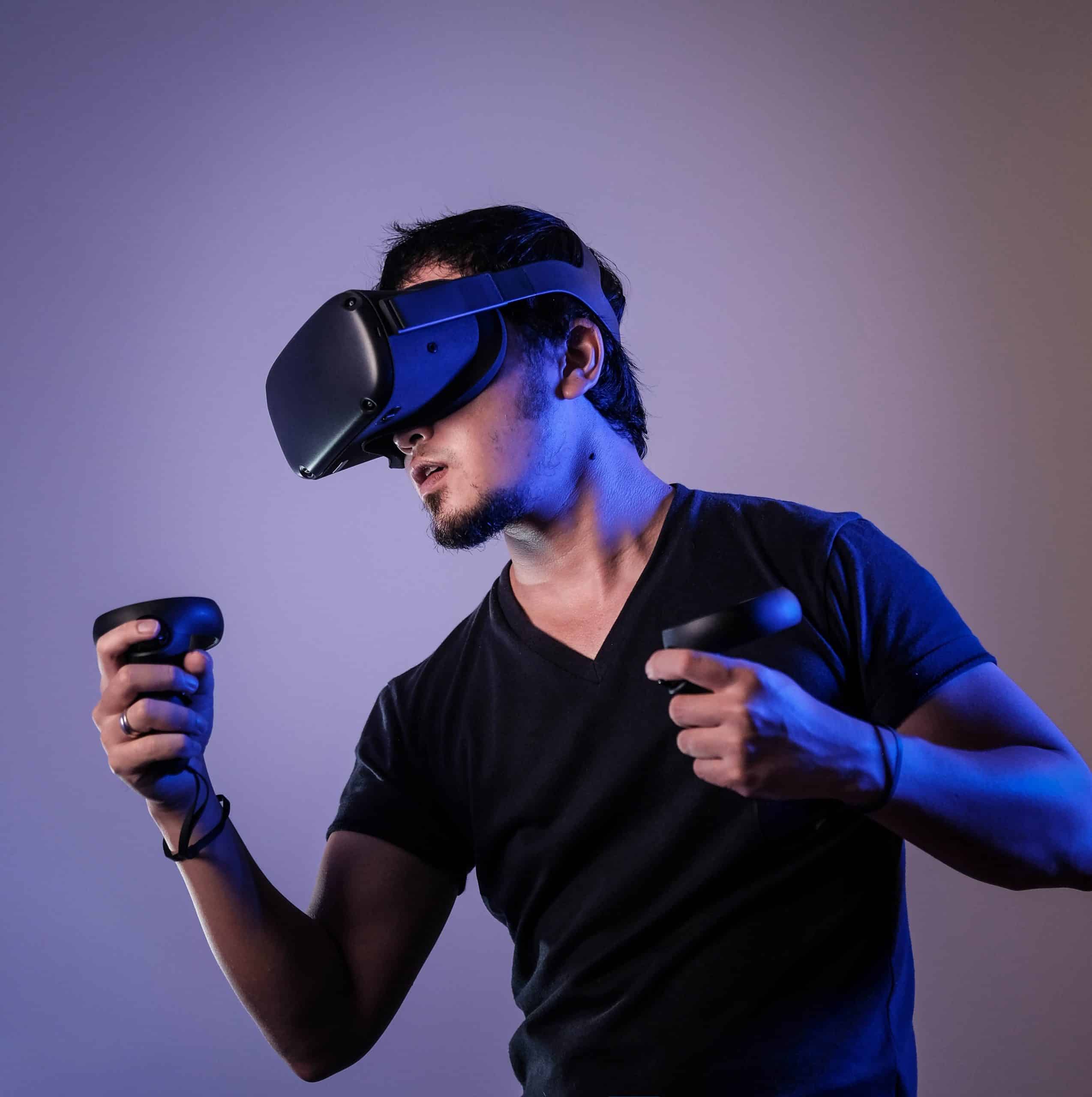Jane Wagner said, “Reality is the leading cause of stress amongst those in touch with it.” Augmented reality (AR) is an interactive experience where a real-world environment is enhanced by computer-generated perceptual information. First invented in the early 1990s by the US air force, AR was soon adopted for use in gaming.
The benefits of AR are vast. As we were once apprehensive about flying, we now board planes and take to the skies without a second thought. The practicality of flying is undeniable, and we will soon live in a world where the benefits of AR are this obvious. Think of it as an opportunity to de-stress from our realities and disappear into a world where consequences are a bit less harsh and we can have a bit more fun.
If you ask most people about augmented reality, their experience is probably more along the lines of Pokemon Go than it is corporate training, but the combination of digital information and the real world provide a valuable solution for learning at work.
Before dismissing AR as a development still in the distant future, the truth is some industries have been all too happy to adopt augmented reality as a tool for better learning. When augmented reality naturally segues into virtual reality applications, these industries will have had a leg up and be ahead of the pack.
VR & AR: What’s the difference?
Virtual reality (VR) is a simulated experience that can be similar to or completely different from the real world. The difference between AR and VR is that virtual reality (VR) completely replaces the user’s real-world environment with a simulated one.
Augmented reality (AR) is interwoven with the physical world, information or objects are added virtually like an overlay. Synonymous terms for augmented reality are mixed reality and computer-mediated reality.
Early Adopters: Augmented Reality at Work
Three specific industries are leading the charge for augmented reality as a learning tool:
1. Healthcare
One of augmented reality’s main benefits is the ability to manipulate objects that are not real. For example, a surgeon could hone her skills with a new technique on an augmented reality human heart model before performing the procedure in real life. Medical students are also using AR to practice in a low-stakes environment to become more proficient and confident. This gives them the advantage of experience, without having ever conducted the surgery itself. According to long-term study in Maryland, the more surgeries a surgeon performs the better the outcomes.
2. Oil
Oil rigs are notoriously dangerous environments, with an offshore worker mortality rate that is seven times the U.S. average, according to the CDC. To protect their employees, oil companies are utilizing augmented reality applications to instruct and teach safety and emergency protocol in the most authentic settings and scenarios possible.
Additionally, problems experienced by the oil industry that this type of training helps with are costs and equipment complexity. The rigs are situated in hard to reach places, so transporting employees around to receive training is difficult, expensive and time-consuming. The equipment used is complex and specific, to have enough practical, real-world training in its use would take too long.
3. Military and Border Patrol
When the stakes are high, personnel are more likely to panic and make a mistake, especially if they’ve never experienced a risky situation before. Augmented reality works as a way to train military personnel for dangerous situations that they could experience in the field. The result is better-prepared personnel who know the steps to take because practice made perfect in training. Border patrol is also using augmented reality as a way to practice a number of different situations to test and evaluate their reactions. Augmented reality is even being used to help treat post-traumatic stress in soldiers.
Healthcare, oil, and military are leading the pack in terms of augmented reality. They’re huge entities so you would think any revolution would be sluggish at best. The truth is they stand to gain a lot from augmented reality because their employees face life-or-death situations every day, which is why they’ve been the first to jump on the augmented reality train.
Blockers to Augmented Reality
It’s true that not all organizations are dealing with the high stakes, critical situations that are common on an oil rig, in the medical field or in the military. Your training might be more along the lines of better sales than it is saving lives. This unfortunately can be one of the roadblocks to encouraging executive buy-in and early adoption of augmented reality. Managers might not see the value of AR for lower-stakes scenarios and therefore choose other training methods.
Other roadblocks that stand in the way of tech adoption is the cost of augmented and virtual reality devices. It costs money to create the technology, but this is a misconception as most cite augmented reality as a cost saver. Device compatibility and poor scenario quality can also stand in the way of getting leadership on board. Mistrust in what’s new and unknown can contribute.
New developments in augmented reality could make it more affordable and much easier for companies to create and distribute everything from sales training to product management in an augmented environment mixed with real-world applications. For now, we’re keeping an eye on the industries that were quick to adopt the technology as their own to see how it makes a difference.
You can’t win if you don’t start
Augmented reality holds huge potential for learning, and to educators and students. According to a recent educational research study, effective use of augmented reality reduces cognitive load by scaffolding information and the lessons’ contents. Augmented reality can very much assist in cognitive thinking and can enhance the cognitive thinking process. This means augmented reality makes learning easier. It is easy to process information taught through augmented reality due to the way the content is delivered.
Douglas H. Everett said, “There are some people who live in a dream world, and there are some who face reality; and then there are those who turn one into the other.” When you get your opportunity to turn your reality into a dream world by using augmented reality, seize it and make sure you keep up with the pack.






